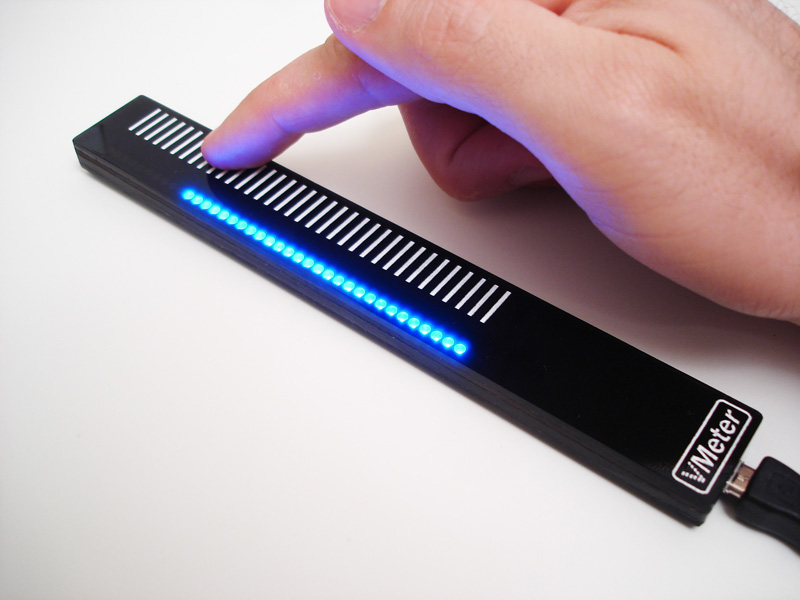VMeter Touch Music Controller and Display Source Software and Hardware.
The VMeter is a touch strip and LED display that can be used to control music programs with position and pseudo-pressure. It's like a motorized slider without any moving parts that enables instaneous jumping between different points. It can control and display controller changes, track volumes or just act like a pitch or mod wheel. For most music programs, no additional software needed is needed as the VMeter simply shows up as a generic USB MIDI device. It can also be used to control or display PC or Mac system volume and CPU activity on PC (system volume control requires additional installed software).
The software is based on the LUFA USB library and Atmel's QTouch capacitive sensing library (same type of touch sensing in most cell phones).
The main hardware components include an AT90USB162 8-bit micro controller, 2 shift registers, 38 blue LEDs and 3 layers of laser-cut acrlyic held together with 3M 467 MP transfer tape.
Please see VMeter.net for tutorials and usage instructions for a variety of different software programs.
The product was originally inspired by Josh Boughey's Stribe, which was based on softpot resistors as inputs.
The software includes
- the main operational firmware
- eeprom (memory that survives unplugging) writing program to store default settings
- OS X status bar program to display and change system volume
- Windows XP & 7 program to control system volume, and on Win 7 only. display sound or CPU levels
- Arduino code to interact with the VMeter using a USB Host shield
- Python code to control LEDs individually
- Max/MSP config utility to change VMeter settings (midi channel, controller number, etc).
Instructions for compiling and installing the firmware are available in the wiki.
The hardware includes
- kicad schematic, libraries, final gerbers
- acrylic laser cut outlines and silk-screen for top
- BOM
There's also a video that walks through the hardware design and explains much of the operational theory.
designed and developed by Scott Driscoll.
